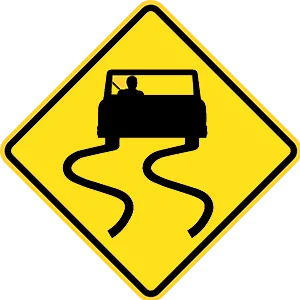Motorcycle Test | License PA 2025 | FREE Online Practice! #11 Page 4 of 4
Take this FREE motorcycle test (license in PA 2025) to check your knowledge of the road rules. To improve your results, download a motorcycle handbook online, study theory, and practice for free on our website. Still worried about how to get a motorcycle license in Pennsylvania in 2025? Check our website for more sample tests, train as much as possible, and boost your grades!
16 . If your front tire goes flat while you are riding:
If one of your tires goes flat while you are riding, ease off the throttle to slow down. If you must brake, gradually apply the brake of the tire that isn't flat, if you are certain of which one that is. As you slow down, edge to the side of the road, squeeze the clutch, and stop.
17 . When approaching multiple hazards at one time, you should:
When approaching multiple hazards at one time, you must be able to identify and separate the hazards. If possible, react to and safely pass one hazard before dealing with the next.
18 . An approaching car is signaling a left turn at an upcoming intersection and you have the right-of-way. You should:
Never expect other drivers to properly yield the right-of-way. Reduce your speed as you enter an intersection. After the intersection, move away from any vehicle that is preparing to turn.
19 . This sign means:

Warning signs prepare drivers for upcoming road conditions and hazards and are usually yellow with black markings. This sign tells drivers to be cautious when driving under conditions that may cause the roadway to become wet and slippery.
20 . If a tire goes flat while you are riding and you must stop, it is usually best to:
If one of your tires goes flat, hold both handle grips firmly, ease off of the throttle, and maintain a straight course. If you must brake, gradually apply the brake of the tire that is not flat (if you are certain of which tire that is). As you slow down, edge to the side of the road, squeeze the clutch, and stop.
See the exact questions that will be on the 2025 Pennsylvania DMV exam.
99.2% of people who use the cheat sheet pass the FIRST TIME
Jeneen was tired of paying $5/gallon. She got herself a scooter that required the motorcycle license. She studyed the motorcycle test cheat sheet and passed her test the next day!
Christopher tells us how he knew nothing prior to obtaining the motorcycle study guide, and he only got one question wrong because he clicked on the wrong answer by mistake.



